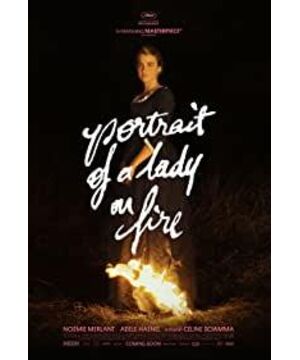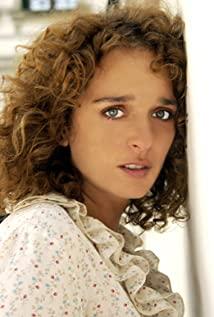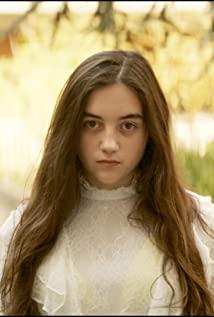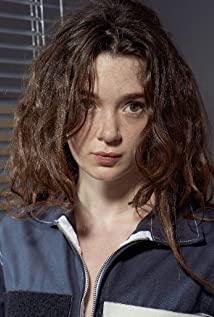There's a passage in "Roma" that runs through, even my favorite part of that movie. The maid in the hostess's house becomes pregnant unexpectedly and is abandoned by the father of the fetus. The maid couldn't bear to have an abortion, and endured the pain of loneliness to give birth to a child. The cry of the baby's birth is reflected in the end of the film. It begins with the publicity of middle-class families and ends with the support of orphans and widows. It is difficult to say that the pregnant mother is just a simple supporting role.
Conception, pregnancy, childbirth, and labor induction are indeed "female-exclusive" experiences, which are also described in a film related to the same sex, which actually shows that the film is not purely limited to same-sex love.
The text of the play itself is very simple, and the painter is hired to make a portrait of the young lady so that she can marry early and live with the maid on a desolate island. The painter and the young lady fell in love for a long time, but in the end the young lady married, the artist left, and the dust settled. But as they fall in love, another twist in the trio's lives is the story of the maid's abortion. The images of the three became more complex, and the portraits became more complete.
Some people may want to say, isn't this a movie labeled "same-sex"? It describes the romantic love of two women, and why read too much into the story of a supporting character.
no. Women of different appearances pass by in this film, some of them never actually come to life, but their presence in the play is the same as the title of the portrait of the burning woman, suddenly appearing and cut off in a trance, but the story is not. been told all the time.
Granted, this is a film about different women, and it deserves more than just a homosexual label.
maid. The painter's guide took her into the life of the young lady; before the painter appeared, the maid's company was obviously much more than her mother's. Most of the time, she is the messenger between the mother and the young lady. She is really a "tool person" who does not need too much personality to write about. However, at the beginning of the movie, it is clear that she is pregnant before marriage, but she deliberately does not explain it. child's father. As the plot unfolds, the concealment of male characters is on the one hand the normality of being absent in lesbian films, on the other hand, it means giving back freedom to women.
She advocates that her body can nurture life and escape this shackle.
Mother. Her appearance is undoubtedly a strong patriarchal authority, forcing the young lady to marry an unnamed fiancé, while the portrait is an ultimatum-like coercion, and she is the urge to arrange marriage from beginning to end. Sister, this character who never existed, is the tragedy of the living system and tradition oppressing women. In order to escape marriage, she ends with death. But how did she die? No one knew, or even dared to talk about it.
The elder sister is dead, the younger sister is on top, in short, they are not free.
These characters are all very negative images, controlled, manipulated, and manipulated in their lives.
But it seems that with the sea breeze from the desolate island, time and time again, they go to the beach, run, laugh, and have more space.
The painter, the young lady, and the maid are often seen as equals in the picture and the play, and the composition is very clearly reflected: in many scenes, the three of them occupy the same part of the scene, cooking tea, eating, reading, and playing cards.
If there really is such a deserted island, she is nothing but a paradise for three women who are not tolerated by the secular world.
Movie scene scheduling is undoubtedly artistic. In the costumes, many loving scenes between the painter and the young lady are matched with green and red; in the camera lens, when the young lady and the artist are alone, the upper body portrait or close-up is full of gaze and a subtle sense of breathing. The artist observes her soft earlobes, the lines of her neck, The color of the skin, the pores, one by one.
I think of the scene in "The Lover" passing over Duras's skin, her flat belly rising and falling, and the man staring at me like me in front of the screen, also nervous and uneasy.
The hue, low-saturated, is as solemn as it is most of the time. Their lives are actually very monotonous. Except for the night of the bonfire, there is not much color.
Among the signifier and the signified, what the audience can restore is not only the portraits of a pair of lovers who are unable to love, but those women who cannot help themselves: oppressed by their parents and the arranged system, and died in pursuit of a free marriage , those who flatter and obey the system of the opposite sex (of course they have to), those who are brave to fight for their own physical freedom...
Back to the story of the protagonist Miss and the painter.
Probably waiting for that burning moment from the start, waiting for that portrait to be drawn.
But the portrait appears many times: covert, naked, excited, painful. The portrait of the burning woman only recorded the happiest moment of the three of them, but the portrait that was sitting upright and prepared for marriage was cold, not to mention the horrific moment of the maid's abortion. Portraits are multiple, as are roles.
Therefore, this film seems to be a group portrait of women, and it is also a portrayal of women falling into the abyss.
This is the portrait of many "them", the story of many "them".
A film created for women does not have to focus on the expression of love between women to show sincerity/
The director is very subtle and delicate, but it is not just piled up with symbols.
It seems abrupt to me to judge the film's perspective or the director's posture based on the frame rate of the male characters in the film, and her female identity cannot be used as an explanation for her delicate brushwork. Looking at the director's previous works and personal history, the labels related to women/sexual minorities are very conspicuous, but she does not speak clearly about women's rights, but promotes "equality".
The non-male perspective in which the film is being debated and debated has a strong sense of new sorrow. We didn't need to express our abandonment of the male gaze with much fanfare, just the portraits of women would suffice.
ending. This is a story that can be seen from the beginning of the tragedy. The lady got married and the two separated.
But no one has the right to put such a negative label on the "destiny" of her, Miss. Her existence, even the death of her own sister, cannot prevent the inevitability of marriage.
Not every kind of blood-shattering resistance is worthy of praise. The audience no longer wants the consummation of the painter and the young lady, or complains about the sadness of a lover not having a family. Because in this series of portraits of wonderful women, the director has spared no effort to express how spiritually: they are bitter but brave, they are brave and romantic, they can endure loneliness but not indulge in the world, they also want to run, and freedom.
French cinema has a tone, slow, serene, classical, and heavy. As the film presents, it doesn't have a soundtrack, and it's even very stingy with the melody. Accustomed to all the restraint in the previous article, at the last moment, the symphony of "Four Seasons" began, grand and resounding, and stopped abruptly, and I don't even know if I should sigh.
Is there a compromise in the end? Like the original tragedies faced by countless same-sex movies, they will eventually fall into the shackles of this "normal" world, which seems to be an innate sin. The reality of the heterosexual system makes it easy for every viewer to imagine the imperfect ending at the beginning of the story - so, "this time, the eyes don't meet".
View more about Portrait of a Lady on Fire reviews











